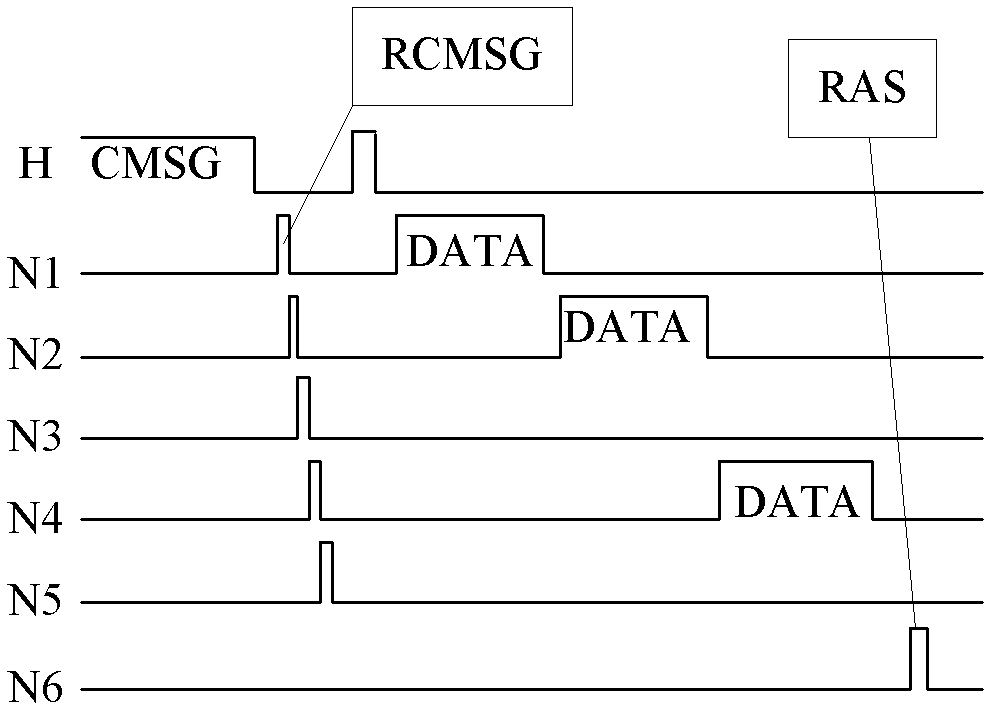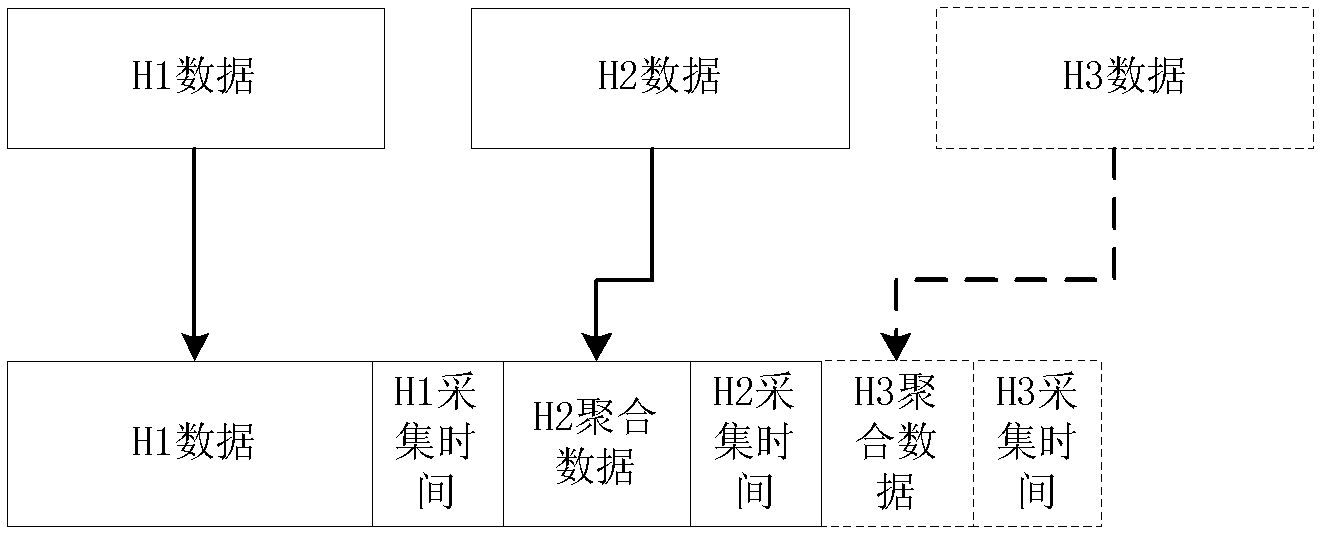Low-latency data aggregation algorithm
A data aggregation, low-latency technology, applied in data exchange networks, digital transmission systems, network topology, etc., can solve problems such as the inability to effectively reduce data transmission delays
- Summary
- Abstract
- Description
- Claims
- Application Information
AI Technical Summary
Problems solved by technology
Method used
Image
Examples
Embodiment
[0023] A low-latency data aggregation mechanism, such as Figure 1-6 As shown, the specific method is as follows:
[0024] 1) Network initialization
[0025] After the network nodes are deployed, a hierarchical network topology structure is established first, and the nodes in the network are clustered, and each cluster elects a cluster head node;
[0026] 2) Intra-cluster data collection
[0027] After the network initialization is completed, the cluster head sends a cluster message CMSG to the cluster members. CMSG includes NID, HID, DisTab, and STATE, where NID is the identification code of the node, HID is the identification code of the cluster head, and STATE is the dormant or active state of the node. , DisTab is the distance table between nodes in the cluster. After node i in the cluster receives the CMSG, it calculates the energy consumption E from the node to the cluster head node according to the distance between the node and the cluster head in the DisTab table i ...
PUM
 Login to View More
Login to View More Abstract
Description
Claims
Application Information
 Login to View More
Login to View More - R&D
- Intellectual Property
- Life Sciences
- Materials
- Tech Scout
- Unparalleled Data Quality
- Higher Quality Content
- 60% Fewer Hallucinations
Browse by: Latest US Patents, China's latest patents, Technical Efficacy Thesaurus, Application Domain, Technology Topic, Popular Technical Reports.
© 2025 PatSnap. All rights reserved.Legal|Privacy policy|Modern Slavery Act Transparency Statement|Sitemap|About US| Contact US: help@patsnap.com



